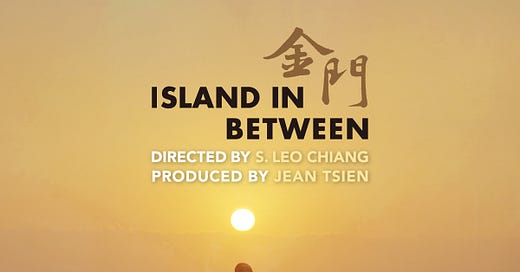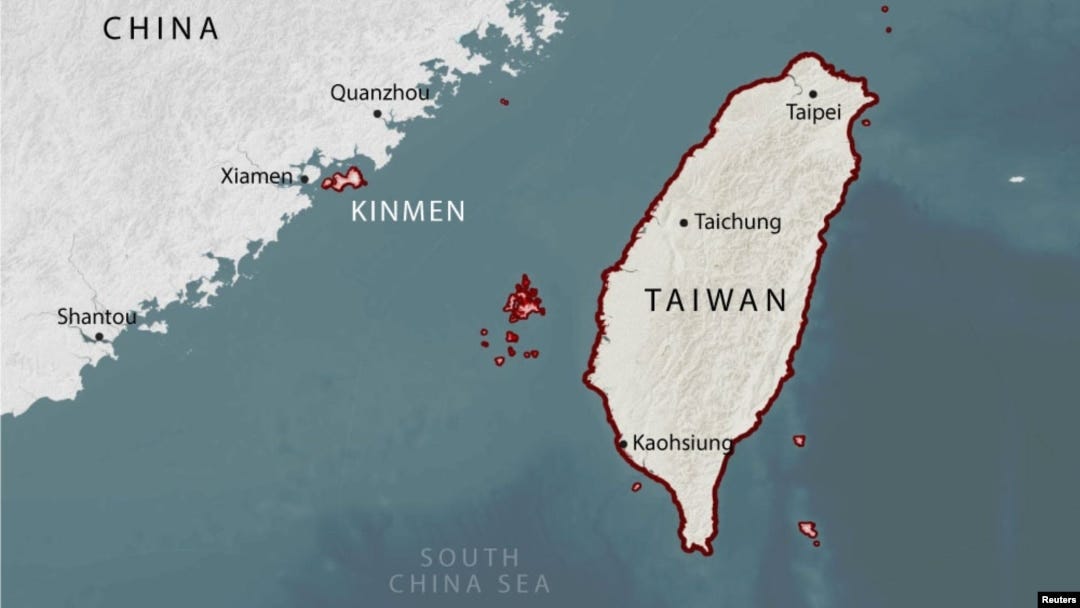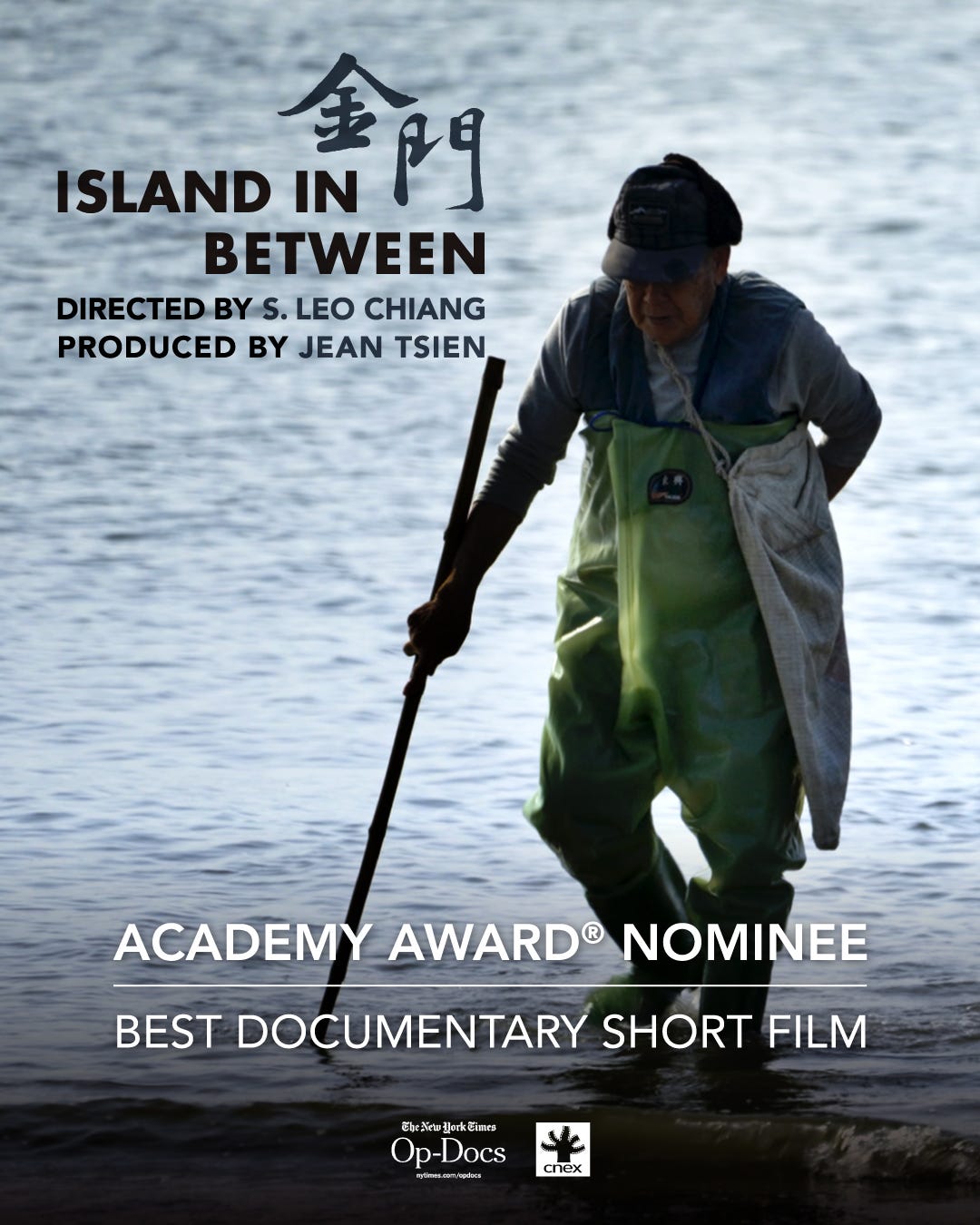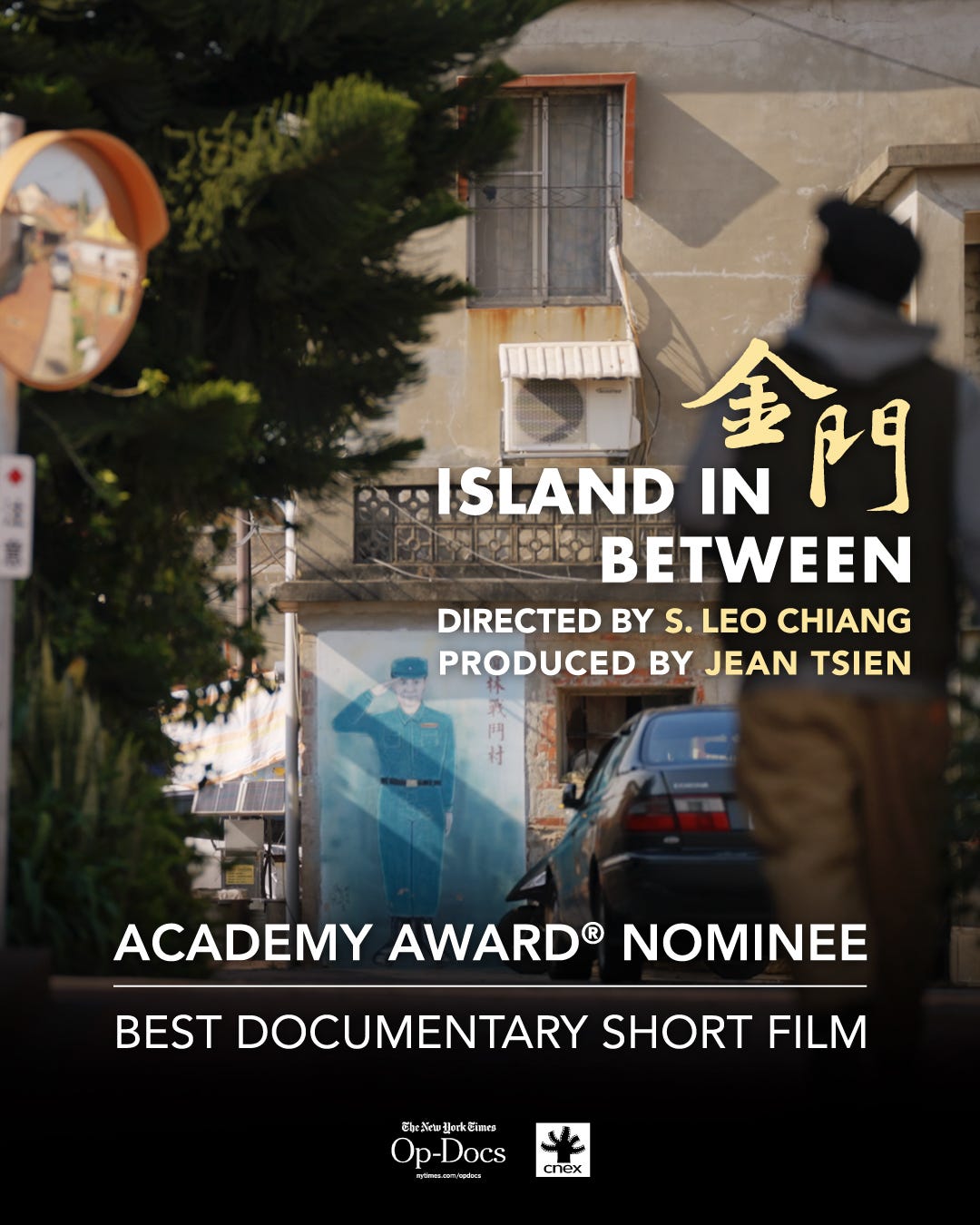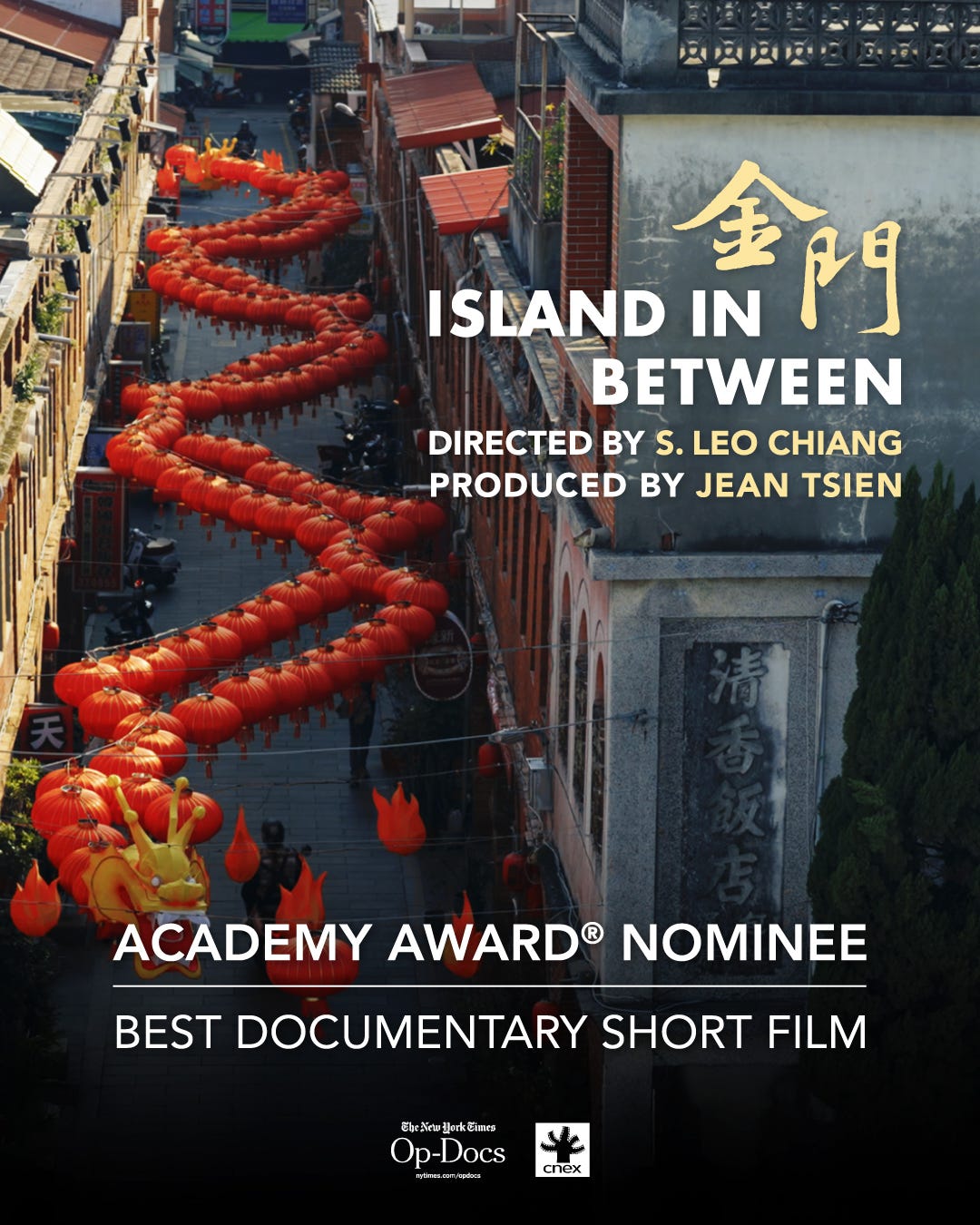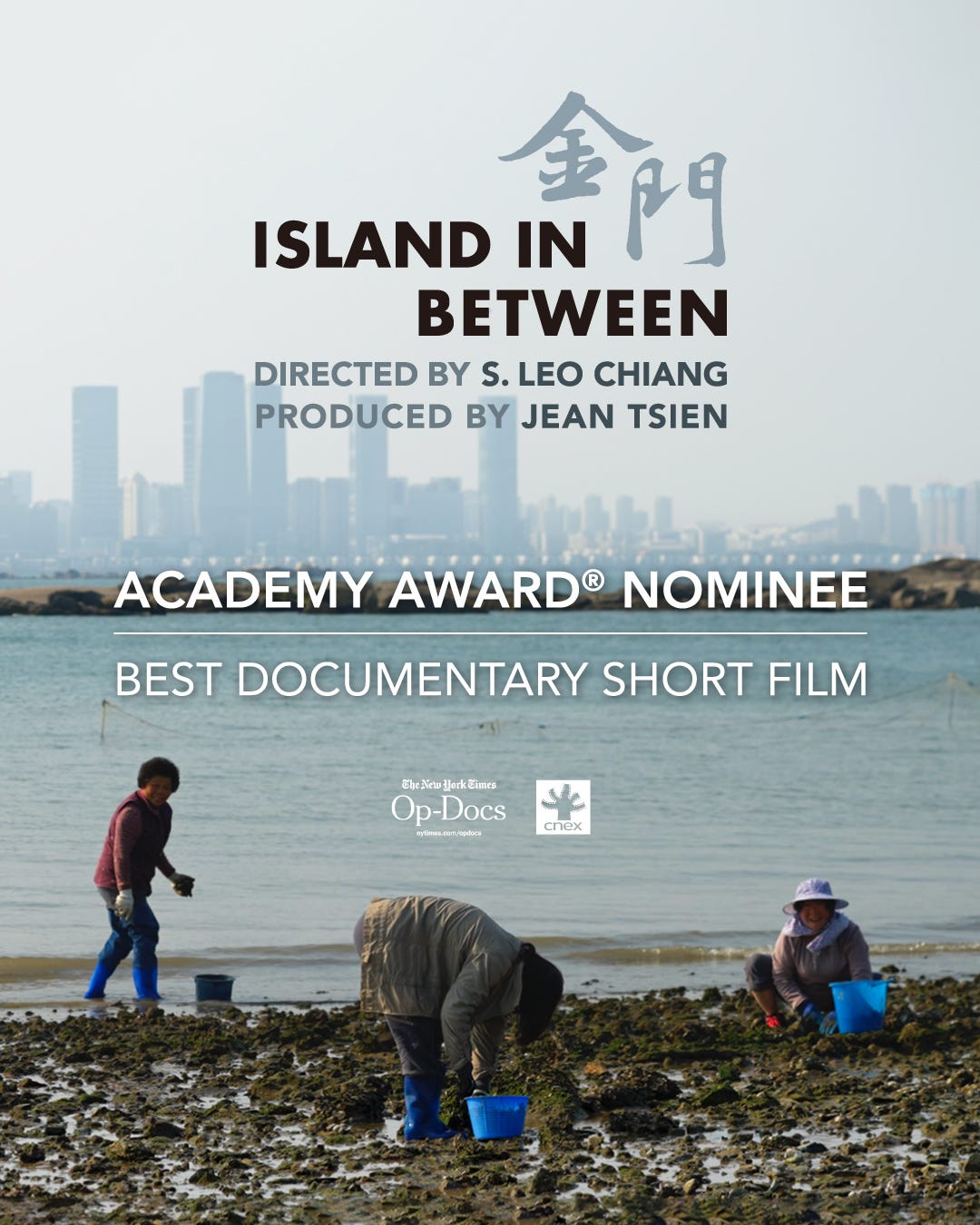Telling the Taiwan story: What I Learned from an Oscar-Nominated Filmmaker
In conversation with S. Leo Chiang
Last week, I had the privilege of chatting with Leo Chiang—Oscar-nominated filmmaker and co-founder of A-DOC (Asian American Documentary Network).
This is his bio:
“His most recent film, Island in Between, received an Oscar nomination for Best Documentary Short Film in 2024. His previous film, Our Time Machine, played at over 50 film festivals worldwide, winning 10 awards, and was nominated for a News & Documentary Emmy Award and a Gotham Award. In 2020, he directed two episodes of the Peabody Award-winning 5-part PBS series, Asian Americans, which traces the epic history of Asians in the US over the past 200 years. His other films include Emmy Award-nominated A Village Called Versailles, about the rebuilding and transformation of the Vietnamese American community in post-Katrina New Orleans (PBS Independent Lens); Out Run, which profiles the only LGBTQ+ political party in the world; Mr. Cao Goes to Washington (Inspiration Award 2012, PBS broadcast 2013); To You Sweetheart, Aloha (PBS broadcast 2006); One + One (CINE Golden Eagle Award 2002); and Safe Journey (PlanetOut.com Short Movie Award 2002).”
I was moved by his short doc Island in Between.
It was a poignant perspective about a small Taiwanese island within a stone’s throw of China. Most people have never heard of Kinmen nor recognize its historical and current political significance.
You would think given the subject matter, the setting, the military motifs that the film is about imminent conflict and how to avoid it. We see shots of buried tanks pointing towards China.
Instead it’s a vignette of everyday life on the island, from kids walking to school
to fisherman working…
Leo weaves in his personal story about how his dad drew Kinmen for his mandatory military service and his grandmother wept.
The film is intensely subtle.
Given that a large part of the audience is unfamiliar with Cross-strait relations, the film scarcely mentions Taiwan explicitly. Some may even confuse Taiwan with Thailand.
Instead it’s an intensely visual storytelling of Kinmen and Taiwan.
Leo made that clear. You can create a highly informative piece with complex animations to tell the story of Taiwan (as we often see on YouTube), but it will be just that.
To make a film, to make a documentary, it’s about the visuals. It’s about the people.
Filmmaking is not just about sharing information (again lots of excellent YouTube content here), it’s about creating an emotional connection—in documentary, it’s about leaning into the audience’s natural sense of curiosity, to let people become invested in the story you are telling.
Leo also emphasized that the story also has to be simple and digestible. There must still be a main subject or character that the audience can anchor to. Focus on a specific moment or event and the specific changes that happened before and after the event.
Often these stories are overwhelming to tell, so honing in on specific moments is essential.
And lastly, it has to be relatable. This conversation made me reflect on which moments impacted Americans the most when it comes to Taiwan and its importance.
During the chip shortage in the midst of COVID-19, people could sell their used cars at nearly the prices they bought them for. Is there an interesting subject to focus on who took advantage of this?
If you want to support a short documentary, please reach out.

